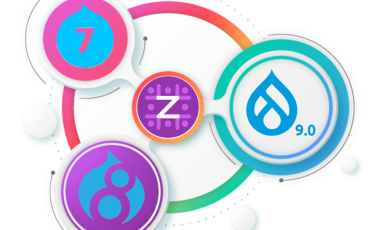Understanding and Accurately Assessing Software Bug Severity Levels
Accurately classifying the bug report ticket is important to manage a software support project. It guides resource allocation, prioritization, and ultimately, project success. Misclassification of bug severity, especially overestimating it, can lead to resource misallocation, where minor issues consume attention that should be directed towards more critical problems. It creates a 'cry wolf' scenario, where every issue is seen as critical, making it difficult to identify truly urgent problems.
Let's dissect the different bug severity levels and equip ourselves with the tools for accurate classification.
Levels of Bug Severity
Critical Severity
Critical bugs are like software grenades; they unleash havoc by crashing systems, causing data loss, or bringing core functionalities to a grinding halt. Think banking app meltdowns during financial transactions, or medical equipment malfunctioning at a crucial moment.
Impact
Revenue plummets, compliance goes poof, and user trust evaporates. These are fire drills; immediate action is paramount to avert disaster.
Examples
- An airline reservation system crashing mid-booking, leaving passengers stranded.
- A healthcare app failing to display patient records during an emergency.
- A self-driving car's braking system malfunctioning during operation.
- A stock trading platform executing incorrect trades due to a calculation error.
- A power grid control system experiencing a blackout due to a software bug.
High Severity
These bugs don't bring the whole house down, but they throw major wrenches into the works. Key functionalities falter, causing significant inconvenience and frustration. Imagine an e-commerce platform where the shopping cart mysteriously empties itself, or a music streaming app that stutters like a broken record.
Impact
Users are grumpy, business suffers. While not an immediate fire, address these roadblocks swiftly to restore smooth sailing.
Examples
- A language translation app spitting out nonsensical gibberish instead of accurate renditions.
- An online payment gateway unable to process transactions.
- A video conferencing app repeatedly dropping calls.
- A word processing software corrupting saved documents.
- A social media app failing to load posts or messages.
Medium Severity
Medium-severity bugs are the nagging paper cuts of the software world. They might cause minor glitches, introduce cosmetic blemishes, or affect non-essential features. Think delayed notifications on a social media platform or a typo in a software manual.
Impact
Users might furrow their brows, but the core functionality remains solid. Schedule repairs after dealing with higher priorities.
Examples
- A fitness tracker miscalculating calorie burn by a significant margin.
- A search engine returning irrelevant results.
- A music player app randomly skipping tracks.
- A website's images loading slowly or incorrectly.
- A navigation app providing inaccurate directions.
Low Severity
These are the gnats of the bug world. They might be typos, visual inconsistencies, or minor inconveniences that have no bearing on core functionality. Imagine a misplaced button on a mobile app or a slightly off-center logo.
Impact
Barely a blip on the radar. Fix them when time permits, but don't let them distract from critical matters.
Examples
- A weather app displaying the wrong sunrise and sunset times.
- A menu item not being highlighted when selected.
- A text box accepting invalid characters.
- A button not aligning perfectly with other elements.
- A minor spelling mistake in a help document.
Guiding Principles for Bug Severity Assessment
Support managers are encouraged to engage in discussions with clients or QA teams to correctly prioritize bugs before passing them on to developers. The following questions can guide this assessment:
- Assess the Impact: Consider how the bug affects system operations, user experience, and business processes. Understanding the extent of the impact is crucial for appropriate prioritization.
- Evaluate Frequency: Determine how often the issue occurs. Bugs that appear frequently might warrant a higher severity level due to their persistent nature.
- Understand User Impact: Assess whether the bug significantly hinders the user's ability to effectively use the software. A bug that greatly disrupts user experience should be given higher priority.
Effort from the support team is essential to educate clients, especially if they consistently misprioritize bugs. Training sessions for non-technical stakeholders can be instrumental in helping them understand each level of severity in practical terms. Providing clear examples and scenarios for each severity level helps stakeholders visualize the impact. Open communication between technical and business teams is essential to ensure the success of the severity assessment process in a support project.
Implementing a Standardized Severity Assessment Process
It's beneficial to develop a guideline document that defines each severity level with project-specific examples. This document should include a process for re-evaluating and adjusting severity levels as more information becomes available. Team members should be encouraged to ask questions if they are unsure about the appropriate classification.
By accurately classifying bug severity and fostering collaboration through a standardized process, you can navigate the development journey with greater efficiency and clarity. This approach not only ensures the delivery of quality software on schedule and within budget but also contributes to a smoother development process, satisfied users, and ultimately, a successful project. Remember, precise assessment and clear communication are key to achieving these objectives.
We have dedicated support and QA teams ready to handle all your website's support requirements. Whether it's a bug fix or applying a security patch, we are here to assist you. Please contact us to get a quote for managing your website.



